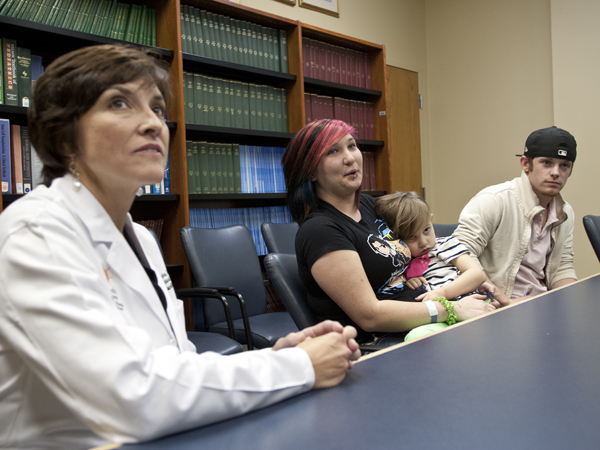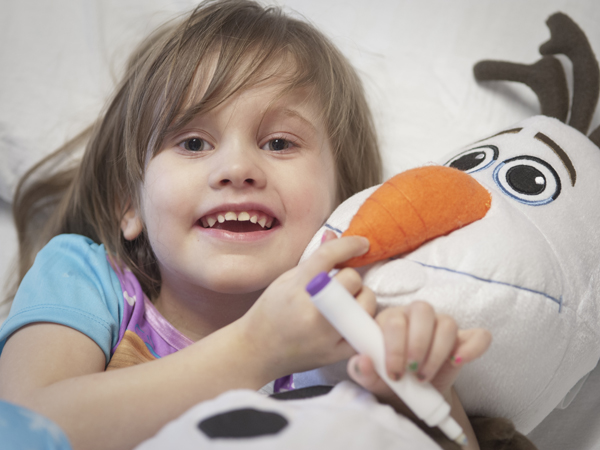Physician, family discuss Helena White’s ‘remarkable’ recovery

Published in News Stories on January 12, 2015
Cameras flashed and video rolled as Helena White entered a conference room at Batson Children’s Hospital on Friday. The 5-year-old shyly looked to her mother, Chasity, as she walked further into the room to give local media their first view at her remarkable recovery from a near-drowning accident on Dec. 28, 2014.
For almost two weeks, Helena’s condition remained atop national newsfeeds as the public watched for signs of improvement from the little girl who had been submerged under cold water in an overturned vehicle for several minutes before being rescued by good Samaritans. Another person who arrived on the scene was familiar with CPR and was able to help Helena regain a pulse.
Dr. Mary Taylor, head of pediatric critical care at UMMC, was working the night Helena was rushed to the hospital. Speaking to the media at the same event Helena attended, Taylor listed the several factors that contributed to what is expected to be a full recovery.
“The first point is she was wearing a seatbelt,” said Taylor, noting that the restraints prevented Helena from suffering more injuries that could have affected her recovery.
“Secondly, the person who performed CPR on the scene within the first moments of rescuing her from the car, that was critical to her good outcome,” added Taylor. “It was life-saving.”
Helena was then rushed to UMMC where she was awake and crying, which was a good sign, said Taylor. And once UMMC physicians started working on getting the child’s breathing back to the levels necessary to sustain a healthy circulation, doctors sedated Helena to help her lungs recover from their injuries.

Helena White, with Olaf the Snowman from "Frozen"
“At that point, her treatment became managing the side effects of her having nearly drowned,” said Taylor. By keeping Helena sedated while on a ventilator, her lungs were able to recover.
And once the ventilator was removed and the sedatives wore off, everyone was thrilled to see that Helena did not suffer any brain damage from the near-drowning, said Taylor.
“Children are pretty resilient, and they heal a bit quicker than adults do,” Taylor said.
Because of their smaller size, children also are able to cool more quickly than adults, said Dr. Robert Hester, professor of physiology at UMMC. That rapid cooling invokes the body’s self-preservation system. In the case of being submerged in cold water, the diving reflex kicks in.
“Normal breathing stops and the heart rate slows to be able to conserve energy,” Hester said about the diving reflex. “Then blood vessels constrict to shunt blood to the heart and brain only.”
Taylor said the cool water in Helena’s accident could have played a role in the girl’s lack of long-term complications from the near-drowning.
As Helena was getting ready to leave the press conference, her mother stroked her daughter’s hair and thanked the health-care workers at UMMC for their help in getting her daughter back.
“Everyone has been so great,” she said. “Helena even said, ‘I love my doctors and nurses. They’ve been so sweet to me.’”
Helena and her family left UMMC on Sunday, exactly two weeks after being rushed through the hospital’s doors. Ray White, Helena’s father, said the girl was doing well after arriving home. The family is planning a belated fifth birthday party within the next few weeks for Helena who was sedated in the ICU during her big day earlier this month.
Of all the things she’s seen while working in the pediatric field, Taylor said Helena and her happy ending is one that’s likely to always stand out.


